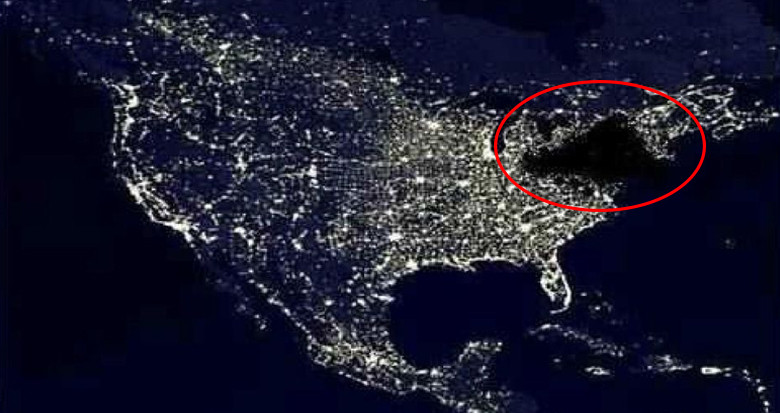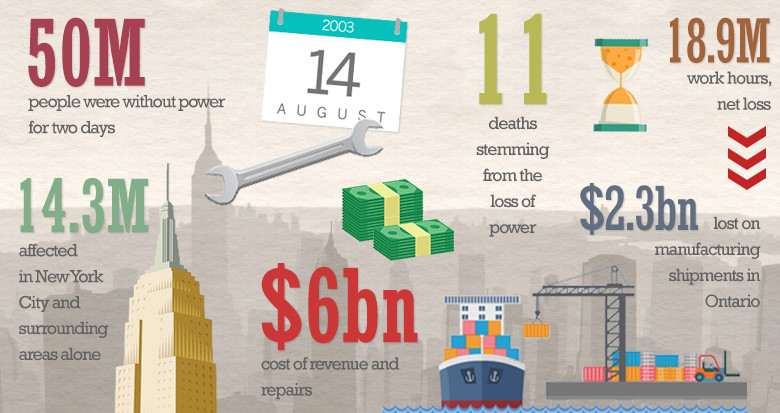The North-East Blackout of 2003
Fourteen years ago a serious blackout occurred, affecting Ontario, Canada and eight US states, disrupting power in major population centers including New York City. Less than two years after the terrorist attacks of September 11th, the lights going out across the North-East caused significant anxiety. On the anniversary of the blackout, we consider both its extent and legacy.
On August 14th 2003 a 230kV line in Northern Ohio was sagging under the heat of the day. Shortly after 2pm, it brushed against a branch of a tree, causing the line to trip. Unfortunately, the alarm system designed to alert operators of such an outage failed. To continue to meet customer demand after the first line went down, other transmission lines were forced to carry added electrical load. Three additional lines sagged and made contact with vegetation, causing additional outages and further strain. By 4pm, the system could no longer cope and shut down. The ensuing cascade of power failures from Ohio to Ontario brought about a widespread and major catastrophe on the electric grid.
One of the largest power outages in history
- 50 million people lost power for up to two days
- 3 million people were affected in New York City and surrounding areas alone,
- $6 billion lost in revenue and repairs
- 11 deaths stemming from the loss of power
- 9 million work hours, net loss
- $2.3 billion lost on manufacturing shipments in Ontario
Following the incident, a joint US-Canada task force was established to investigate the causes and measures needed to reduce the possibility of future outages. The resulting report revealed that one of the four primary causes of the blackout was inadequate vegetation management, also highlighting that three of the four lines, whose tree contact led to the blackout, had been inspected only two months prior to the event, with no infringements identified.
Prior to the blackout, utility companies in North America were not bound by tree management regulations when it came to supplying electricity to customers. Instead, the standards issued by NERC were mostly followed voluntarily. After the blackout, NERC standards became mandatory for North American utility companies, including new regulations, such as the Vegetation Management Regulation FAC-003-1.
Because of the more stringent and mandatory standards imposed following the event, every utility company has subsequently been required to review and enhance its tree cutting and inspection practices. Enacting a risk-based approach to vegetation encroachments, informed by accurate reporting, allows network operators to efficiently and cost-effectively achieve compliance and prevent outages caused by tree contact.
Visit our vegetation management page for more information on how geospatial data delivers precise vegetation reporting.


